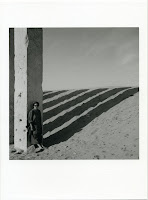A tree is best measured when it is down
I came across this very evocative and thought provoking phrase when perusing the compositions of Philip Glass one of which The Cicil Wars used it as a title. A little search in google contained a variety of sources including old Nigerian village proverbs and many other esoteric sources. I finally came across it in Carl Sandburg's magisterial biography of Lincoln. In the last chapter of this 4 volume tome Sandburg quotes this phrase in the title and attributes it to a a common saying of "woodsmen".
Whatever the origin, does one really have to die before one can come up with a" measure" of that person? There is no denying the truth of the saying when one is talking about a grand personage. For after death a large number of contemporaries may write or speak about their memories of the accomplishments or foibles of the deceased. But here we have to evaluate the evaluators and more time needs to pass before one can actually give the real measure of the man( or woman). A whole industry of biographical research flourishes on the notion that there is always something new to be said about Napoleon, Churchill, Mozart, and many others. So it seems that at least a full measure of the tree does not seem to be possible, at least in the case of the great and worthy. Immediately following the death of Mozart a large number of articles and books were written about his death all purporting to show that he was murdered by Salieri, by his student Sussmeyer by others all because of a variety of illicit affairs or gambling debts or whatever.to this day modern biographers keep these ideas alive if only by debunking them.
A tall tree can be measured when still standing using simple trigonometry. But in all fairness this is an approximation even though it is can be pretty exact. All this was brought to me when I went to visit Selma's grave on the second anniversary of her death. At the same time the publication of the American Institute of Yemeni Studies came and it was an issue dedicated to her memory since she was instrumental in founding it. Although several people told me that they never knew the extent of her activities( thereby confirming the truth of the aphorism above), I felt that a person is much more than their accomplishments. It is hard to bring back a person by a recitation of activities or even by anecdotes. How does one do this? Maybe that is why I prefer reading autobiographies than scholarly biographies which attempt a measure of the subject. I am glad that there is a new industry of writing memoirs because I suspect that we all feel the same way about the qualities of a person. In a memoir, the "voice" of the person an be heard. Perhaps the increase in the number of published memoirs is a substitute for the lack of keeping journals or diaries although the writing of blogs (ahem) is an alternative. Of course there is no guarantee that a memoir is any more truthful than the early Mozart biographies but at least you hear the person talking about what he or she were thinking and doing. This is especially the case if you actually knew the person and want an aide memoire.







